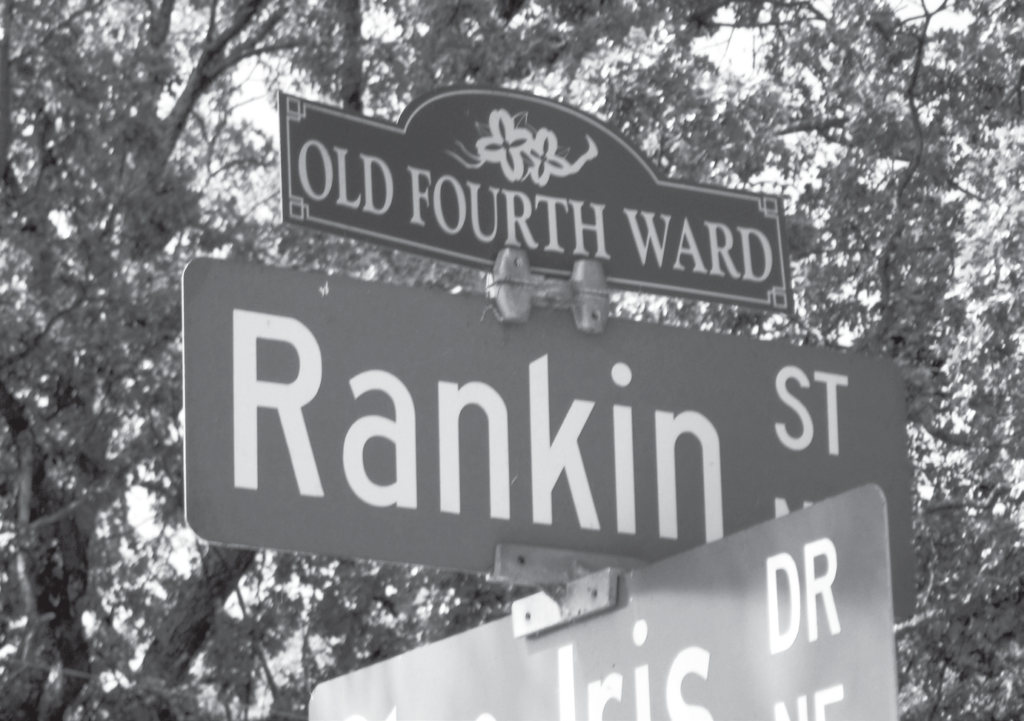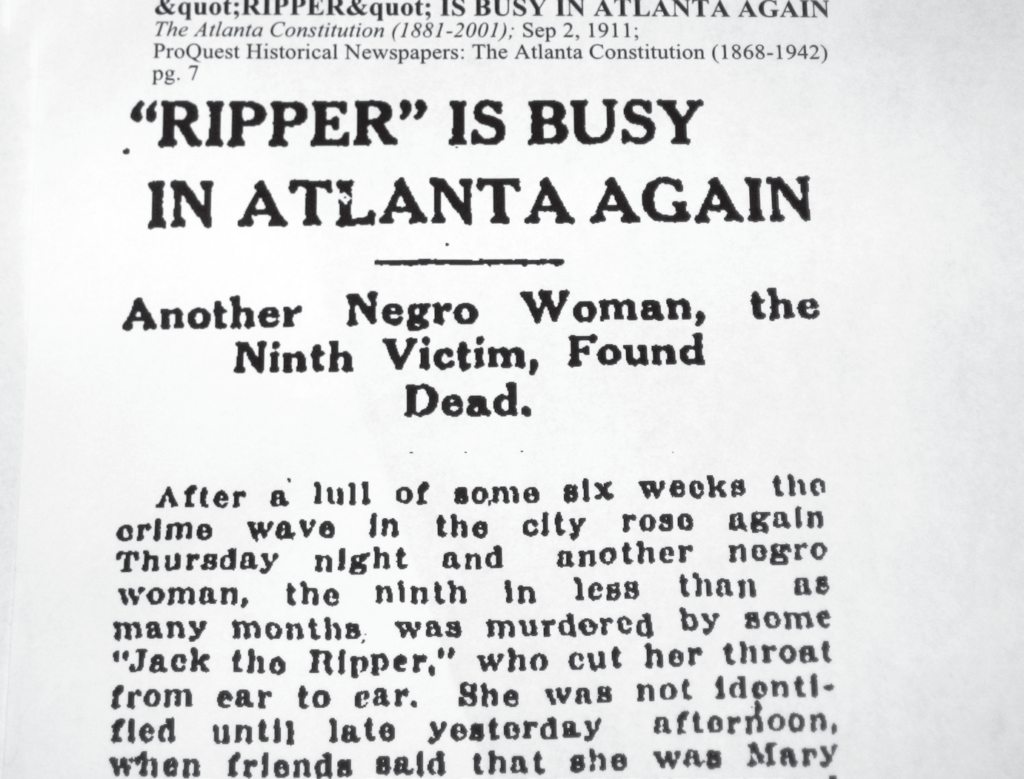
Fans of the recent HBO series Atlanta’s Missing and Murdered: The Lost Children have become newly aware of the horrific crimes the Gate City suffered in the late 1970s, crimes that until recently went either unnoticed or in large part forgotten. But what devotees of the series may not have realized is that the nearly thirty murders committed at the end of that decade—twenty-three children and six adults, all of them Black—were presaged by another spate of slayings seventy years earlier.
We’re talking, of course, about the Atlanta Ripper.
The Atlanta who? You might ask. Agreed: though in the early 1900s the case made news worldwide, over a century later it had been eclipsed not just by the passage of time, but by other, cases featuring more sensational mass murderers—Jeffrey Dahmer, James Jones, and Charles Manson, to name a few. But thanks to the work of intrepid historians such as Jeffery Wells (The Atlanta Ripper: The Unsolved Case of the Gate City’s Most Infamous Murders) and Corinna Underwood (Murder and Mystery in Atlanta), these grisly crimes can finally be documented in full.

Following the Civil War, when General Sherman’s notorious march razed it nearly to the ground, Atlanta faced a protracted period of rebuilding. Though the process was lengthy and difficult, beset by many of the racial and economic inequities of the Reconstruction period, by the turn of the century Atlanta’s role as a railroad terminus had cemented its importance in the state. Though segregation plagued the Jim Crow South—and had engendered race-based violence, such as riots in 1906—the African-American neighborhoods in Atlanta banded together as a tightly-knit community, home to many small businesses, working families, and cultural and religious institutions.

The close-knit nature of these neighborhoods made the murders that began to take place there all the more horrifying. Beginning in April 1909, the bodies of African-American women began to show up in the historic Old Fourth Ward, some killed by gunshot, some killed by blunt force trauma to the head. As Wells notes, the accumulation of bodies—almost one per month during that time—stoked considerable fear in the area, especially once the next series of slayings began.
The moniker will sound familiar to crime enthusiasts for a reason: just a few years earlier, Jack the Ripper had terrorized London, murdering women and prostitutes in the goriest of fashions. By early 1911, the perpetrator had begun adding a similar grisly signature to his victims. Rosa Trice, a thirty-five year-old housewife, was found dead just a short distance from her home, her head bashed in, her throat slashed open. That February, another victim (never named) was found murdered in exactly the same way, and then in June, one Addie Watts fell prey as well. Local newspapers claimed a ‘Black Butcher,’ or in the name that stuck, an ‘Atlanta Ripper.’

Over the next three years, until 1913, the Ripper would strike again and again, almost always targeting young African-American women who were walking late at night in secluded or out-of-the-way areas, such as open fields between their workplace and their homes. Interestingly, the daughter of one of his early victims actually survived her own attack, and got a glimpse of her assailant as he fled—Emma Lou Sharp, daughter of the slain Lena Sharp, described him as a “tall, dark, broad-shouldered man wearing a broad-brimmed black hat.” But such identifiers were not enough to bring anybody in, and month after month, the Ripper continued to claim more lives.
There comes a point in every crime wave when enough is enough, and as Wells details, that point arrived quickly in old-town Atlanta. In contrast to the racial unrest of 1906, by the summer of 1911 both black and white communities had begun working together to try to solve the crimes. Despite a couple of arrests (and several dubious confessions), the cases remained open, and by the early autumn the Ripper had started striking again. By the end of the year, Wells notes, this seemingly uncatchable criminal had claimed no fewer than fifteen lives. The following two years, 1912 and 1913, each saw a handful more, then the flood slowed to a trickle, with the last murder taking place in 1915. The total death toll attributed to the Ripper was nearly two dozen, nearly all young Black women.
Meet the men who claimed to be the Atlanta Ripper.
Again you may ask: the Atlanta who? The problem is, similarities in methods, victims, and settings don’t necessarily mean the same person was responsible for all the crimes, and as Wells notes, the great legacy of the Atlanta Ripper murders is that to this day, no one knows if there was one Ripper, multiple Rippers, one Ripper and a series of copycats, or—just as frighteningly—an unchecked outburst of random killings by an unknown number of perpetrators. More than a century later, it’s likely we will never know, despite the work of historians like Wells who have uncovered new evidence and connections. But there’s another legacy at work too. We’ll let Wells have the final say:
“…the [Ripper] murders showed the pride and resilience of the black community. It was no time before the clergy and black business community stood up for peace, order and safety in Atlanta, not just in their community, but also for all people on the city’s streets.”
Now that’s a legacy we can all get behind.
Looking for more to read during quarantine? Check out our quaran-reads here. Finding us for the first time, and want to learn more about what we do? Visit our welcome page and sign up for the Crime Capsule email newsletter. See you behind bars!



